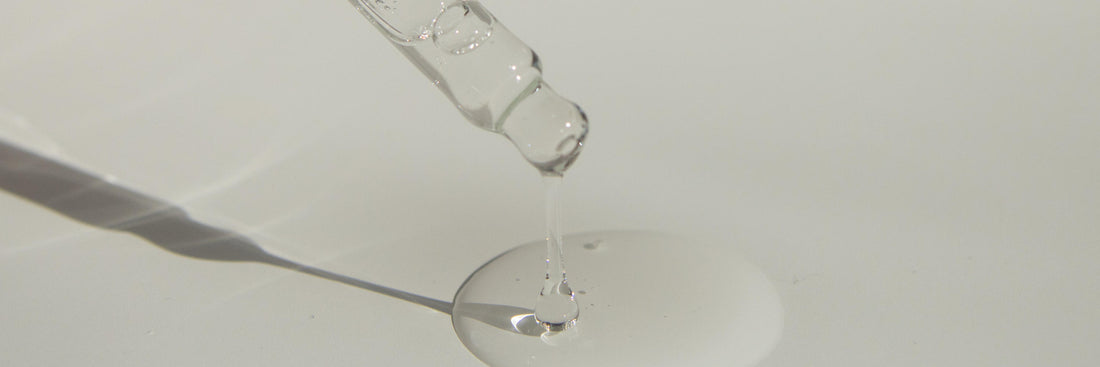Hyaluronic acid (HA) is a clear, gooey substance that is found naturally in the body in connective tissues, such as the skin, joints, and even the eye's vitreous humor. HA is made up of long chain sugars called polysaccharides that attract and bind water and helps to keep the skin hydrated and plump and to lubricate and cushion the joints. The body’s ability to produce hyaluronic acid declines with age, especially after the age of 40. When the body does not have enough hyaluronic acid the skin can become dry, wrinkled, and less elastic and it can also lead to joint problems such as osteoarthritis.
There are several options for increasing your hyaluronic acid levels as you age including supplements and injectable fillers (for joints and skin). Both of these methods may not be suitable for everyone and you should consult with a qualified medical professional prior to injesting or injecting HA into your body. Another option is a topical application through skincare products such as creams or serums. Often when you see a skincare product that lists hyaluronic acid on the label the ingredient name is listed as sodium hyaluronate which is derived from hyaluronic acid.
There are numerous articles across the internet stating that hyaluronic acid or sodium hyaluronate can hold up to 1,000 times its weight in water, but there is actually not much evidence to back up this bold claim. Even those who dispute the exact amount of water that sodium hyaluronate can hold concede the ingredient has powerful water binding abilities. The benefits of sodium hyaluronate for the skin include this ability to hydrate by attracting and retaining moisture, as well as its antioxidant and anti-inflammatory properties making it a popular ingredient for skincare products targeting fine lines and wrinkles.
While hyaluronic acid is naturally occurring in the body, it is typically synthetically derived when used in skincare and supplements. Traditionally this production process often involved using animal tissue such as rooster combs, but now it is more common to see bio-fermentation options that utilize plant materials such as wheat when making hyaluronic acid or sodium hyaluronate. While still not a pure natural ingredient the bio-fermentation process allows for a vegan friendly ingredient that can be non-GMO. Other options for those not interested in wheat derived ingredients include tremella extract and senna seed extract which have similar hydrating properties to hyaluronic acid.
In addition to the different types of production processes, sodium hyaluronate can vary in terms of the molecular weight of its finished form. The different types of sodium hyaluronate include low molecular weight sodium hyaluronate, high molecular weight sodium hyaluronate, and super high molecular weight sodium hyaluronate. Low molecular weight sodium hyaluronate has smaller molecules, which makes it easier for the skin to absorb, but may also increase the likelihood of irritation for some individuals. Higher molecular weight sodium hyaluronate has larger molecules, which makes it more effective at drawing moisture to the surface of the skin and can show faster results, but potentially with a shorter duration versus the smaller molecule option. In either case moderation is important as overuse of skincare with sodium hyaluronate can pull too much moisture up from the lower levels of the skin creating drier skin.
Sodium hyaluronate is an incredibly versatile skincare ingredient, and it can be used to address a variety of concerns. Whether you are looking to hydrate your skin, reduce the appearance of fine lines and wrinkles, or improve skin elasticity, sodium hyaluronate can help when used in a well thought out skincare regimen.
Sodium hyaluronate can be found in our day+night renewing serum.

